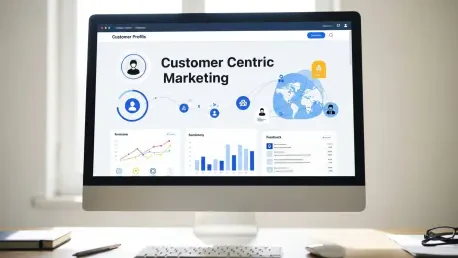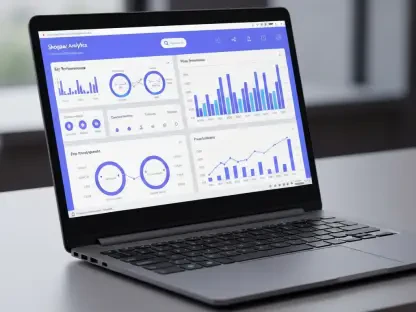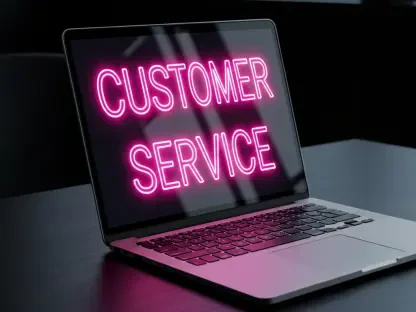I’m thrilled to sit down with Zainab Hussain, a seasoned e-commerce strategist with a deep background in customer engagement and operations management. With years of experience helping retail brands navigate the complexities of digital marketing, Zainab has a unique perspective on breaking through growth barriers and building sustainable, customer-focused strategies. In this conversation, we dive into the challenges of scaling marketing efforts, the pitfalls of disconnected tools, the power of a customer-centric mindset, and the role of automation and experimentation in driving profitable growth.
How did your brand first encounter a growth ceiling, and what did that look like in terms of your marketing efforts and outcomes?
Early on, we saw great initial success with basic tactics like welcome emails and abandoned cart reminders. But after a while, the results just plateaued. We were putting in more effort—adding promotions and pop-ups—but revenue wasn’t budging. It felt like we’d checked all the boxes of the standard playbook, yet we were stuck. Our marketing team was stretched thin trying to manage multiple campaigns without a clear sense of why growth had stalled.
What do you see as the biggest reasons brands struggle to move past those early marketing wins?
A lot of it comes down to mindset and structure. Many brands focus on adding more channels or tools without a cohesive plan, thinking quantity equals growth. But this often leads to fragmented customer experiences. Plus, external pressures like rising customer acquisition costs or new tariffs force teams to rethink efficiency, and if the foundation isn’t solid, they’re already behind. It’s usually not about lacking ideas—it’s about lacking a unified approach to execution.
How have increasing costs, such as customer acquisition or external factors like tariffs, influenced your marketing strategy in recent years?
These rising costs have been a wake-up call. We’ve had to prioritize profitability over just chasing volume. For instance, with customer acquisition costs climbing, we shifted focus to retention and maximizing lifetime value through better segmentation and personalization. Tariffs squeezed our margins, so we doubled down on optimizing campaigns to avoid wasted spend. It’s pushed us to be more strategic about where every dollar goes.
Can you share an experience where using multiple marketing tools led to a disjointed customer experience?
Absolutely. We once had a customer buy a product at full price, and within minutes, they received an SMS with a discount for the same item because the SMS tool wasn’t synced with our purchase data. It was frustrating for the customer and embarrassing for us. They felt cheated, and it eroded trust. That kind of disconnect happens when tools operate in silos, and it’s a clear sign the customer experience isn’t the priority.
How do you tackle the challenge of disconnected tools, especially when data like purchase history isn’t shared across platforms?
We’ve had to get creative. Initially, we relied on manual workarounds, like exporting and importing data between systems, but that’s not sustainable. Now, we’re moving toward integrating platforms or using middleware to ensure data flows seamlessly. It’s about creating a single source of truth for customer information so that every tool is working off the same playbook. It’s still a work in progress, but it’s already reducing errors.
What kind of impact have these tech challenges had on your team’s ability to focus on growth-driven campaigns?
They’ve been a huge drain. My team used to spend hours fixing data mismatches or troubleshooting why a campaign didn’t trigger correctly. That’s time not spent on brainstorming new ideas or analyzing what’s working. When you’re stuck in reactive mode, growth takes a backseat. It’s only when we started addressing these tech gaps that we could redirect energy to strategic initiatives.
What does customer-centric marketing mean to you, and how does it stand apart from a strategy focused on channels?
To me, customer-centric marketing is about starting with the individual—what they need, when they need it, and how they want to receive it. It’s not about pushing messages through every possible channel just because you can. A channel-focused strategy often ignores the bigger picture of the customer’s journey. Customer-centricity means building experiences that feel cohesive and relevant, no matter where the interaction happens.
How do you go about collecting and leveraging first-party data to map out your customers’ journeys?
We prioritize gathering data directly from interactions—things like browsing behavior, purchase history, and engagement with emails or SMS. We use surveys and preference centers too, to let customers tell us what they want. Then, we centralize this data to track their journey across touchpoints. It’s about connecting the dots so we can anticipate their next move, whether that’s a follow-up offer or a helpful reminder, based on their actual behavior.
What changes have you observed in customer engagement when you’ve tailored experiences to their specific preferences?
The difference is night and day. When we started personalizing content—like recommending products based on past purchases or sending messages at times they’re most likely to engage—open rates and conversions spiked. Customers feel seen, not spammed. For example, tailoring an email campaign to reflect someone’s browsing history led to a noticeable uptick in click-throughs. It builds loyalty because they know we’re paying attention to their needs.
What’s your perspective on using automation to manage various stages of the customer journey?
Automation is a game-changer. It lets us scale personalization without burning out the team. For instance, setting up flows for key actions like a first purchase or an abandoned cart means we’re responding in real time with relevant messages. It frees up marketers to focus on strategy rather than manual tasks. The key is ensuring automation feels human—personalized content and timing make all the difference.
How has giving your marketing team the freedom to experiment impacted your ability to break through growth barriers?
It’s been transformative. When we removed layers of red tape and gave the team room to test new ideas—whether it’s a quirky email subject line or a new channel—they started uncovering wins we hadn’t anticipated. Not every test succeeds, but even the failures teach us something. Having that freedom, backed by unified tools and quick access to data, means we can iterate fast and scale what works. It’s how we’ve pushed past plateaus.
What is your forecast for the future of customer-centric marketing in the retail space?
I think it’s only going to become more critical. As costs keep rising and competition intensifies, brands that don’t truly understand and prioritize their customers will fall behind. I see technology, especially AI and unified platforms, playing a bigger role in making personalization seamless and scalable. The future is about deeper, more meaningful connections—retailers who master that will thrive, while those stuck in a channel-first mindset will struggle to keep up.









